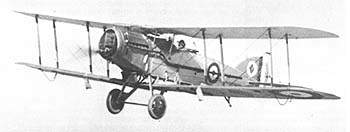
|
|
||||||||
Bertram Hopkinson
He opened the experimental station at Orfordness in 1916 (now a National Trust Property) where he carried out research on bombs, gyro sights, guns and ammunition. He learned to fly, although he was twice as old as the average pilot, because he felt this would help in his understanding of what was required by pilots. He worked on the problems of flying at night, in bad weather, and on navigating in clouds. He was promoted to Colonel. It was on 26 August, 1918, that Hopkinson was killed in an aircrash, whilst flying from Martlesham Heath to London in bad weather, in a Bristol Fighter.

A Bristol Fighter
It is a mark of the respect in which he was held that he was buried with full military honours at St Giles cemetery following a service at King's College Chapel. Ewing wrote of him that he had 'not a trace of self seeking, without a thought not directed to the country's good and was obviously ready to make any personal sacrifice.' It is also said that only those who knew something of the secret work that he had undertaken in the First World War could appreciate the magnitude of the nation's loss. Sir Henry Tizard said 'in his position and with his knowledge and character he would have had great influence on government policy between the wars. I would go so far as to say that the chance of a second world war breaking out would have been greatly lessened.'